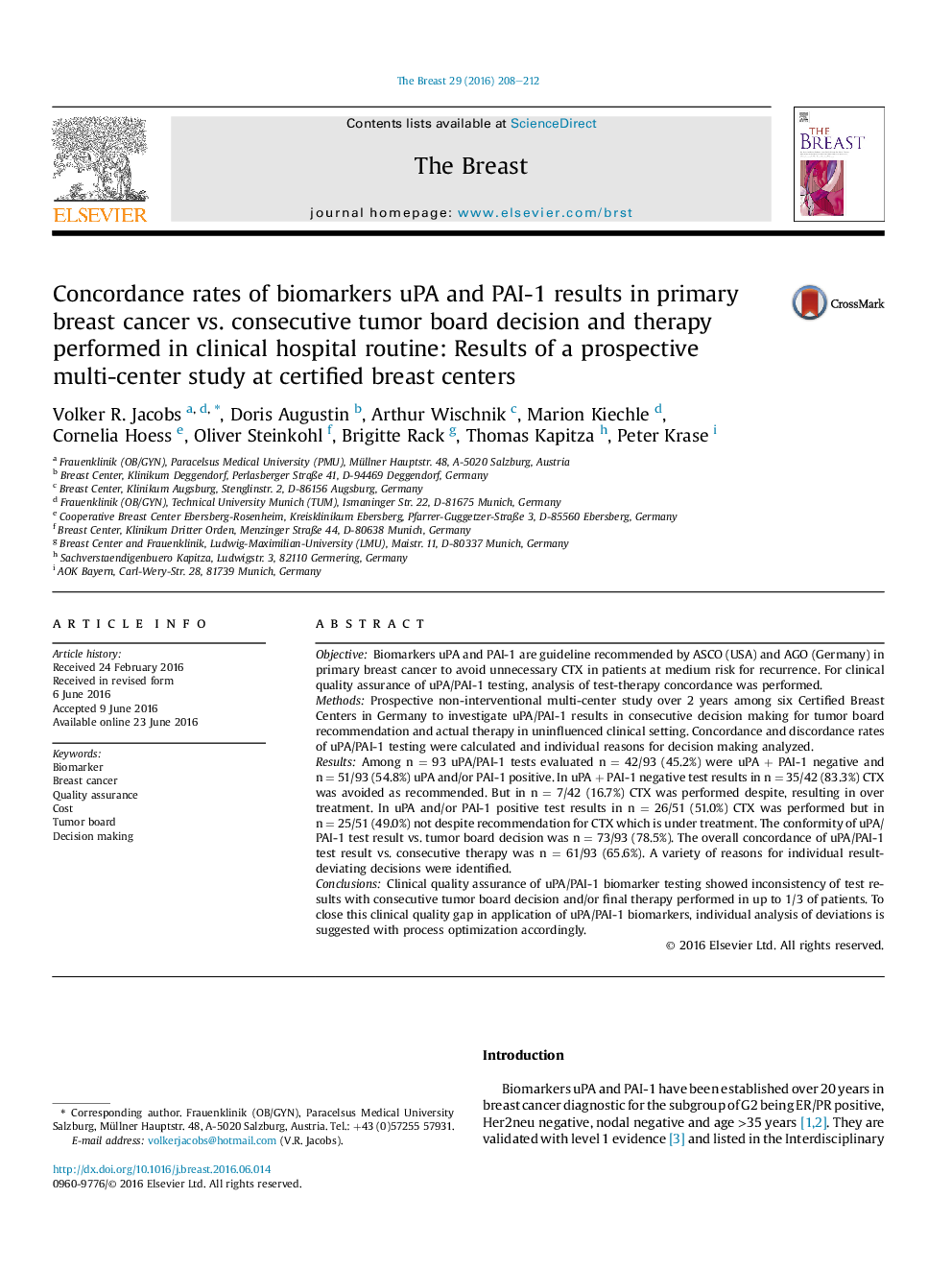| Article ID | Journal | Published Year | Pages | File Type |
|---|---|---|---|---|
| 6169337 | The Breast | 2016 | 5 Pages |
â¢Biomarker results in breast cancer are in consistent in up to 1/3 with consecutive tumor board decision and/or final therapy.â¢Deviation from biomarker results leads to quality issues and unnecessary or avoidable costs for CTX or recurrences.â¢Multiple reasons were identified, many known in advance, pointing to a potential for process optimization in biomarker use.â¢Successful Precision Medicine requires quality assurance for optimizing clinical use and application of biomarkers.
ObjectiveBiomarkers uPA and PAI-1 are guideline recommended by ASCO (USA) and AGO (Germany) in primary breast cancer to avoid unnecessary CTX in patients at medium risk for recurrence. For clinical quality assurance of uPA/PAI-1 testing, analysis of test-therapy concordance was performed.MethodsProspective non-interventional multi-center study over 2 years among six Certified Breast Centers in Germany to investigate uPA/PAI-1 results in consecutive decision making for tumor board recommendation and actual therapy in uninfluenced clinical setting. Concordance and discordance rates of uPA/PAI-1 testing were calculated and individual reasons for decision making analyzed.ResultsAmong n = 93 uPA/PAI-1 tests evaluated n = 42/93 (45.2%) were uPA + PAI-1 negative and n = 51/93 (54.8%) uPA and/or PAI-1 positive. In uPA + PAI-1 negative test results in n = 35/42 (83.3%) CTX was avoided as recommended. But in n = 7/42 (16.7%) CTX was performed despite, resulting in over treatment. In uPA and/or PAI-1 positive test results in n = 26/51 (51.0%) CTX was performed but in n = 25/51 (49.0%) not despite recommendation for CTX which is under treatment. The conformity of uPA/PAI-1 test result vs. tumor board decision was n = 73/93 (78.5%). The overall concordance of uPA/PAI-1 test result vs. consecutive therapy was n = 61/93 (65.6%). A variety of reasons for individual result-deviating decisions were identified.ConclusionsClinical quality assurance of uPA/PAI-1 biomarker testing showed inconsistency of test results with consecutive tumor board decision and/or final therapy performed in up to 1/3 of patients. To close this clinical quality gap in application of uPA/PAI-1 biomarkers, individual analysis of deviations is suggested with process optimization accordingly.
